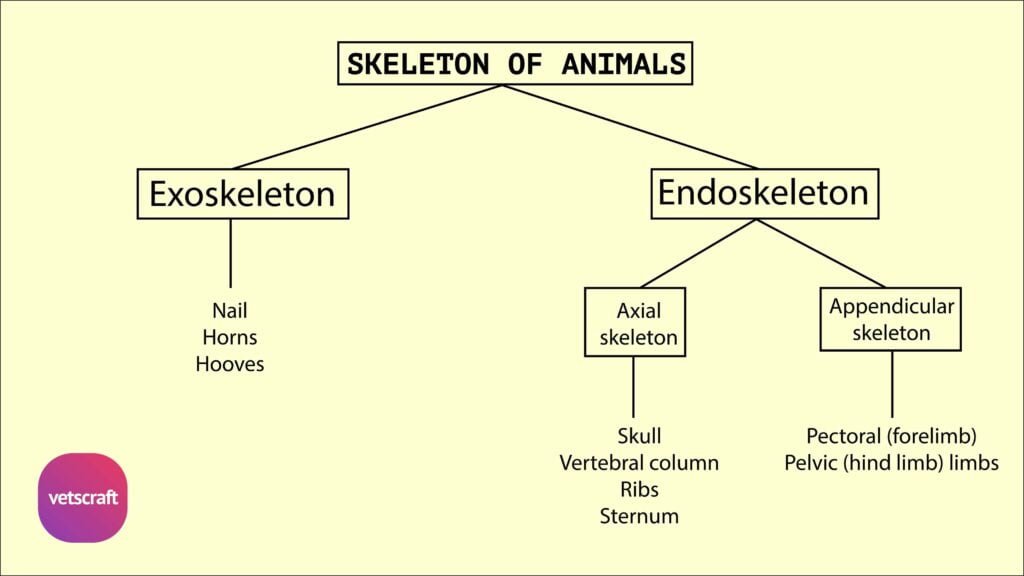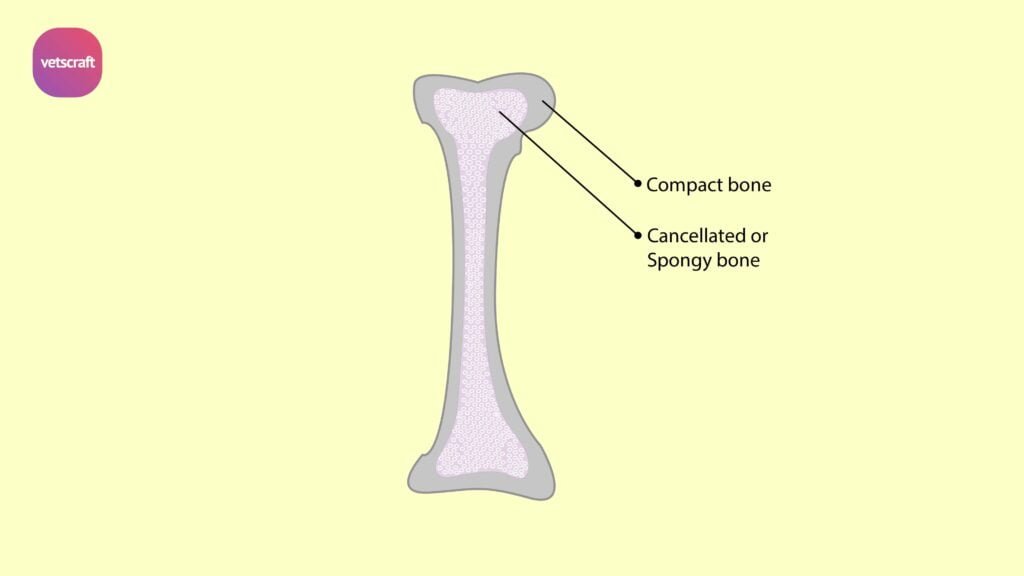TABLE OF CONTENTS
Thorax (Thoracic Cavity) of Domestic Animals
The thorax, also known as the thoracic cavity, is a vital anatomical region in domestic animals that houses major organs such as the heart, lungs, and parts of the esophagus and trachea.
It bounded by the ribs, vertebrae, and sternum, it plays a key role in respiration and circulatory function.
Thorax of Ox
The thoracic cavity or thorax of the ox is the anterior of the three visceral cavities. It is compressed laterally and is narrow in front and wide behind:
- The roof is formed by the bodies of the dorsal vertebrae.
- The lateral walls are formed by the ribs and their cartilages.
- The base slopes obliquely downwards and forwards and is bounded superiorly by the last dorsal vertebra, inferiorly by the last sternebra, and laterally by the last ribs and their cartilages.
- The thoracic inlet is oval and limited above by the first dorsal vertebra, below by the first sternebra, and laterally by the first pair of ribs.
In life, the inlet is closed by a number of structures that enter and leave the thorax, while the base is closed by the diaphragm. The intercostal muscles fill the intercostal spaces between the ribs.
Comparative Anatomy of Thoracic Cavity
The thoracic cavity shows notable anatomical differences among various domestic animals, depending on their body size, posture, and respiratory needs.
Sheep and Goat
- The thoracic cavity of sheep and goats is the same as that of the ox.
Horse
- The thoracic cavity of the horse is highly compressed laterally. It is longer than that of the ox.
Pig
- The thoracic cavity of the pig is relatively wide.
Dog
- The thoracic cavity of the dog is barrel-shaped.
Rabbit
- The thoracic cavity of the rabbit is short.
Fowl
- The thoracic cavity of the fowl is continuous with the abdominal cavity and is relatively wide.

